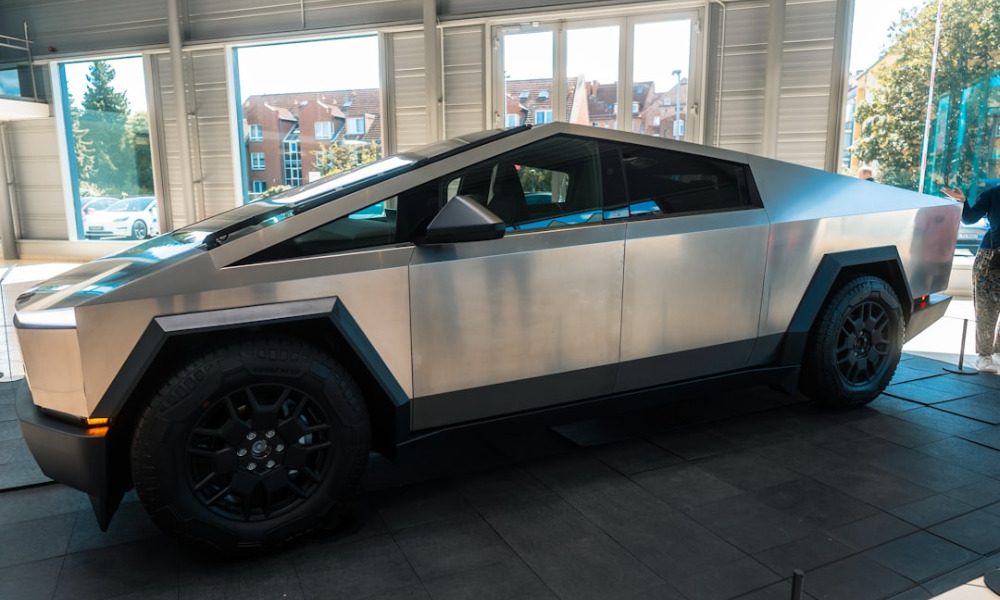
Tesla’s Cybertruck Faces Quality Concerns with Over 57,000 Recalls in 2024
Tesla’s highly anticipated Cybertruck, initially touted as a game-changing, ultra-durable vehicle, has been dogged by quality issues since its launch. New data reveals that Tesla has issued recalls for over 57,000 Cybertrucks this year alone, raising serious questions about the electric pickup’s reliability and the challenges of scaling production for such an innovative vehicle.
The recalls highlight persistent mechanical and software problems, with some issues serious enough to impact safety. According to research from Finbold, Tesla has averaged 172 Cybertruck recalls per day in 2024, underscoring the scale of the challenges facing the company.
Six Recalls in a Single Year
The Cybertruck, Tesla’s first foray into the electric pickup market, has been subjected to six recalls in 2024, five of which exclusively targeted the model. The issues ranged from minor mechanical flaws to potential safety hazards, including:
- Loose or improperly attached parts
- Accelerator pedal risks, including the potential to get stuck
- Loss of driving power, impacting the vehicle’s operability
- Rearview camera delays, resolved through an over-the-air (OTA) firmware update
The largest recall of the year, involving over 27,000 vehicles, stemmed from a software-related delay in the rearview camera display. While this issue was rectified through an OTA update, minimising inconvenience to owners, it added to the growing perception of the Cybertruck as a vehicle plagued with teething problems.
A Startling Recall Rate
Perhaps most alarming is the Cybertruck’s estimated recall rate for 2024. The exact number of vehicles Tesla has delivered remains undisclosed, but data from Kelley Blue Book suggests that approximately 28,250 Cybertrucks were shipped by the end of September. With 57,332 recalls issued, this implies a potential recall rate of 200%, meaning that every vehicle sold may have been affected by multiple recalls.
Such a statistic is concerning for a vehicle that Tesla positioned as a durable, next-generation truck capable of reshaping the automotive industry. However, Tesla is no stranger to recalls and has often weathered criticism for quality control issues in its vehicles. The Cybertruck’s situation appears to follow this trend, though it does raise fresh concerns about the company’s ability to manage quality while pushing the boundaries of automotive design.
Public Perception vs Reality
While the high recall numbers might spark alarm, experts caution against jumping to conclusions. Andreja Stojanovic, a co-author of the Finbold research, pointed out that public perception of Tesla’s quality issues is sometimes disproportionate to their actual prevalence.
“Despite the recall rate potentially approaching 200%, the situation might prove similar to the broader reputation of Tesla cars as spontaneous combustion engines,” said Stojanovic. “The actual number of instances in which Tesla vehicles caught fire for no apparent reason is minuscule compared to what the public perception and online representation suggest.”
This perspective suggests that while the Cybertruck’s recalls are significant, the real-world impact may be less dramatic than the numbers imply. For instance, the most challenging fixes required in 2024 were estimated to take no more than three hours, minimising disruption for owners.
The Role of Over-the-Air Updates
One factor that mitigates the inconvenience of Tesla’s recalls is the company’s reliance on OTA firmware updates. Unlike traditional automotive recalls, which often require trips to dealerships for repairs, many of Tesla’s fixes can be deployed remotely.
The rearview camera issue, for example, was resolved via an OTA update, allowing owners to address the problem without scheduling a service appointment. This capability not only reduces downtime for customers but also demonstrates Tesla’s forward-thinking approach to integrating software solutions into vehicle maintenance.
However, while OTA updates can address software issues efficiently, they are not a panacea. Mechanical flaws, such as loose parts or risks with the accelerator pedal, still require physical repairs, which can strain Tesla’s service network and impact customer satisfaction.
Innovation and Growing Pains
The Cybertruck is one of Tesla’s most ambitious projects, featuring a bold design, stainless steel exoskeleton, and advanced capabilities. Its development marked a significant departure from traditional automotive manufacturing, which has contributed to both its appeal and its challenges.
Bringing such a radically different vehicle to market inevitably involves growing pains, particularly as Tesla scales production. The company has a history of pushing the boundaries of automotive design and technology, often taking risks that other manufacturers might avoid. While this approach has cemented Tesla’s reputation as an industry disruptor, it has also exposed the brand to scrutiny over quality and reliability.
The Cybertruck’s recalls may partly reflect the complexities of launching an entirely new product line. However, they also highlight the importance of balancing innovation with rigorous quality control—an area where Tesla has faced criticism in the past.
What Does This Mean for Tesla’s Reputation?
Tesla’s reputation has long been a mix of cutting-edge innovation and controversy. On the one hand, the company has revolutionised the electric vehicle (EV) market, pushing competitors to accelerate their transition to EVs. On the other hand, Tesla has frequently been criticised for issues ranging from build quality to customer service.
The Cybertruck’s recall figures will likely fuel ongoing debates about Tesla’s quality control. Critics may argue that the high recall rate undermines the brand’s claims of durability and reliability, while supporters might counter that recalls are a normal part of innovation and rapid scaling in the automotive industry.
Ultimately, Tesla’s ability to maintain customer trust will depend on how effectively it addresses these issues. The company’s proactive use of OTA updates and efforts to minimise repair times are positive steps, but consistent quality improvements will be crucial to sustaining long-term confidence in the Cybertruck and other models.
Lessons for the Industry
The challenges faced by the Cybertruck also hold lessons for the broader automotive industry. As car manufacturers increasingly adopt advanced technologies and push the limits of design, they must also invest in robust testing and quality assurance processes. Striking the right balance between innovation and reliability is essential, particularly in an era where customer expectations for quality are higher than ever.
Tesla’s experiences with the Cybertruck may serve as a cautionary tale for other automakers entering the EV market. While bold designs and cutting-edge features can attract attention and sales, they must be backed by rigorous quality standards to ensure customer satisfaction and safety.
Looking Ahead: What’s Next for the Cybertruck?
Despite the challenges, the Cybertruck remains a highly anticipated vehicle, with strong demand from Tesla’s loyal customer base. The company’s ability to address quality issues and refine production processes will be critical to its success in the long run.
As Tesla continues to scale production and deliver Cybertrucks to customers, it will face heightened scrutiny over its quality control efforts. However, the brand’s track record of overcoming obstacles and maintaining its position as a market leader suggests that it has the potential to navigate these challenges effectively.
Conclusion
Tesla’s Cybertruck has had a turbulent debut year, with over 57,000 recalls highlighting significant quality issues. While the recall rate is concerning, it’s important to recognise the broader context: Tesla is tackling complex challenges inherent in launching a groundbreaking vehicle.
The company’s use of OTA updates and its commitment to addressing customer concerns demonstrate a proactive approach to problem-solving. However, to solidify its reputation and ensure the Cybertruck’s long-term success, Tesla must prioritise quality control and deliver on its promise of creating a durable, reliable vehicle.
As the EV market evolves, the lessons learned from the Cybertruck’s first year will likely shape the future of both Tesla and the automotive industry as a whole. For now, customers and industry watchers alike will be closely monitoring Tesla’s next moves.


